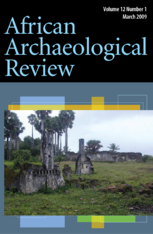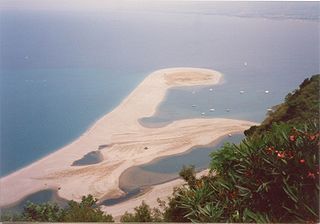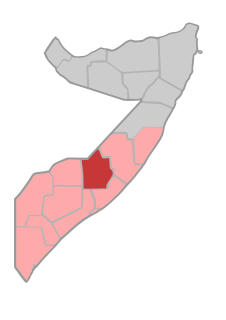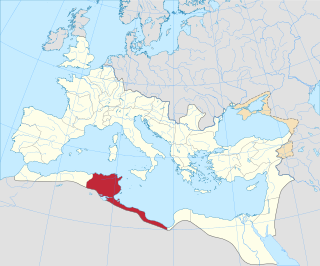 W
WIn the 1890s, an epizootic of the rinderpest virus struck Africa, considered to be "the most devastating epidemic to hit southern Africa in the late nineteenth century". It killed more than 5.2 million cattle south of the Zambezi, as well as domestic oxen, sheep, and goats, and wild populations of buffalo, giraffe, and wildebeest. This led to starvation resulting in the death of an estimated third of the human population of Ethiopia and two-thirds of the Maasai people of Tanzania.
 W
WThe African Archaeological Review is a peer-reviewed journal focusing on current African archaeology. Contents included in the journal range from the evolution of modern humans, advancements of human culture, and basic African contributions to the field of archaeology. The journal's first edition was released in 1983, and has been published continuously every year since then. Although new editions are typically released quarterly every year, there have been triannual and biannual releases of the journal. Its primary publisher is Springer Science and Business Media B.V. based in the United States.
 W
WJonker Afrikaner was the fourth Captain of the Orlam in South West Africa, succeeding his father, Jager Afrikaner, in 1823. Soon after becoming Kaptein, he left his father's settlement at Blydeverwacht with three brothers and some 300 followers and relocated to the area that is today central Namibia. From 1825 onwards he and his council played a dominant political role in Damaraland and Namaland, creating a de facto state.
 W
WThe underground town of Agongointo-Zoungoudo is located approximately 9 km from Abomey, in central Benin. The city was discovered in 1998 by the Danish company DANIDA. It consists of a series of bunkers and other housing structures around 10m deep underground, built in an apparent effort to provide dwelling as well as protection for warriors.
 W
WAn Army at Dawn: The War in North Africa, 1942–1943 is a Pulitzer Prize–winning book written in 2002 by long-time Washington Post correspondent Rick Atkinson. The book is a history of the North African Campaign, particularly focused on the role of the United States military. The book follows the early planning stages of the Allied invasion of North Africa, the landings in Casablanca, Oran, and Algiers, and finally the back and forth struggle for dominance in Tunisia. Atkinson constructs his narrative from letters, newspaper articles, and personal diaries of commanders, soldiers, and others on the ground in northern Africa. The book discusses the battlefield failings and successes of American troops and their commanders and the larger context of the burgeoning cooperation between the Allied forces in World War II.
 W
WThe Battle of Tyndaris was a naval battle of the First Punic War that took place off Tyndaris in 257 BC. Tyndaris was a Sicilian town founded as a Greek colony in 396 BC located on the high ground overlooking the Tyrrhenian Sea in the Gulf of Patti. Hiero II, the tyrant of Syracuse, allowed Tyndaris to become a base for the Carthaginians. The battle took place in the waters between Tyndaris and the Aeolian Islands, with Gaius Atilius Regulus in command of the Roman fleet. Subsequently, the town fell to Rome.
 W
WThe 2009 Beledweyne bombing took place on June 18, 2009 in Beledweyne, Hiiraan, Somalia. A suicide bomber carried out the attack, detonating an explosives-laden vehicle at the front gate of the Medina Hotel. The blast killed 35 people, among them the Somali security minister Omar Hashi Aden, former Somali ambassador to Ethiopia and the African Union, Abdikarim Farah, and several Somali diplomats. Jihadist group al-Shabaab claimed responsibility for the attack.
 W
WBoseta is an ancient suppressed and titular see of the Roman Catholic Church in North Africa. It dates from the Roman era, but with the Muslim conquest of the Maghreb ceased to effectively function. The current bishop is Francisco Mendoza de Leon. Cardinal Alfonso López Trujillo was the bishop in 1972, and François van den Berghe was bishop during and after the Second World War.
 W
WByrsa was a walled citadel above the Phoenician harbour in ancient Carthage, Tunisia, as well as the name of the hill it rested on.
 W
WThe Cambridge History of Africa is an illustrated, eight-volume history of Africa published by Cambridge University Press between 1975 and 1986. Each volume is edited by a different person; the general editors of the series are John Donnelly Fage and Roland Oliver.
 W
WDinguiraye is a small town in northern Guinea, known for its large mosque which until recently was thatched. As of 2014 it had a population of 47,250 people.
 W
WThe emblem of the African Union features a golden, boundary-less map of Africa inside two concentric circles, with stylised palm leaves shooting up on either side of the outer circle.
 W
WThe Emperor: Downfall of an Autocrat, published in 1978, is Polish journalist Ryszard Kapuściński's analysis of the decline and fall of Haile Selassie's regime in Ethiopia. In 1974, while the Ethiopian Army was still busy consolidating power, Kapuściński "traveled to Ethiopia to seek out and interview Selassie's servants and closest associates on how the Emperor had ruled and why he fell." In large part, the book is a study of the workings of a royal court. It is said that this book is intended to be allegorical of the government of Poland, especially Edward Gierek.
 W
WEnkapune Ya Muto, also known as Twilight Cave, is a Late Stone Age site on the Mau Escarpment of Kenya. Beads made of perforated ostrich egg shells found at the site have been dated to 40,000 years ago. The beads found at the site represent the early human use of personal ornaments.
 W
WHamdullahi was a nineteenth-century imamate in what is now the Mopti Region of Mali. Founded around 1820 by Seku Amadu, Hamdullahi served as the capital of the nineteenth-century Fula empire of Massina.
 W
WThe Harem Years (ISBN 978-0935312706) is a firsthand account of the private world of a harem in colonial Cairo.
 W
WHereroland was a bantustan in South West Africa, intended by the apartheid government to be a self-governing homeland for the Herero people. It was set up in 1968.
 W
WImperial Reckoning: The Untold Story of Britain's Gulag in Kenya is a 2005 non-fiction book written by Caroline Elkins and published by Henry Holt. It won the 2006 Pulitzer Prize for General Non-Fiction.
 W
WThe 1920-22 Jabal al-Gharbi civil war was a conflict which occurred in the Nafusa Mountains and surrounding areas, in what is today the country of Libya, fought between local tribal leaders competing for political offices in the Tripolitanian Republic.
 W
WKaarta, or Ka'arta, was a short-lived Bambara kingdom in what is today the western half of Mali.
 W
WKel Ahaggar is a Tuareg confederation inhabiting the Hoggar Mountains in Algeria. The confederation is believed to have been founded by the Tuareg matriarch Tin Hinan, whose monumental tomb is located at Abalessa. The official establishment is dated to around 1750. It has been largely defunct since 1977, when it was terminated by the Algerian government.
 W
WThe Kilukeni were members of the Lukeni kanda or House of Kilukeni, the ruling dynasty of the Kingdom of Kongo from its inception in the late 14th century until the 1567 with the rise of the House of Kwilu. The Kilukeni were springboard for most of the major factions that battled for control of Kongo during its civil war.
 W
WThe King Incorporated was the first history book published by award-winning Scottish journalist and historian Neal Ascherson exploring the course of the Congo Free State from its foundation to annexation, as well as the role of King Leopold II.
 W
WIn Kenya under British rule the kipande was an identity document which featured basic personal details, fingerprints, and an employment history. The Native Registration Amendment Ordinance of 1920 made it compulsory for African males above the age of 15. The effect of its adoption was to radically restrict the mobility of Africans. The main intent of the policy, supposedly, was to keep track of the labor pool efficiently. Kipande caused much resentment as all African males were required to wear it at all times around their necks.
 W
WThe Kouré shooting was a mass shooting that occurred in Niger on 9 August 2020. The attack left at least 8 civilians dead, six French and two Nigeriens. The attack took place in Kouré, a rural community in Tillabéri Region.
 W
WMacriana maior is an ancient suppressed and titular see of the Roman Catholic Church in North Africa. It dates back to the Roman era but survives as a titular see of the Roman Catholic Church. The current bishop is Robert Barron, and other modern bishops have included Mar Sebastian Adayantharath and Julijans Vaivods.
 W
WA series of attacks took place in Mali in 2020. The attacks left at least 133 people dead and another 20 were injured.
 W
WThe Manikongo or Mwene Kongo was the title of the ruler of the Kingdom of Kongo, a kingdom that existed from the fourteenth to the nineteenth centuries and consisted of land in present-day Angola, Republic of the Congo and the Democratic Republic of Congo. The manikongo's seat of power was Mbanza Kongo, now the capital of Zaire Province in Angola. The manikongo appointed governors for the provinces of the Kingdom and received tribute from neighbouring subjects.
 W
WManthimba was the capital of the Maravi Kingdom. It was located at 2 kilometres (1.2 mi) from the present village of Mtakataka in the Dedza district, in the central region of Malawi.
 W
WMaravi was a kingdom which straddled the current borders of Malawi, Mozambique, and Zambia, in the 16th century. The present-day name "Maláŵi" is said to derive from the Chewa word "malaŵí", which means "flames".
 W
WThe Republic of Martyazo was a secessionist state proclaimed by Hutu rebels in Burundi in early May 1972 at Vyanda during the genocidal violence of 1972 as a bid to create a political base. At first, the state was located inside the mountainous Vugizo commune, between Makamba and Nyanza Lac. However, it quickly expanded to its surroundings, even reaching the border with Tanzania. A few days after the republic was declared, forces of the Tutsi-dominated government of Michel Micombero occupied the region, ending the rebellion and the existence of Martyazo. The number of people to have perished in the rebellion is believed to have ranged between 800 and 1200. Because of the nature of the government and the rebellion, many killed were Tutsi hostages held in plantations in the area tried by the self-proclaimed "people's courts" established in the secessionist state.
 W
WMateriana was a city in the late Roman province of Byzacena. A titular see, it was located the central Sahel region of Tunisia.
 W
WThe Military Committee for National Salvation was a military government of Mauritania that took power in 1979. It was installed by Mohamed Khouna Ould Haidalla, Ahmed Ould Bouceif and fellow officers, in an internal regime/military coup d'état on April 6, 1979, removing Colonel Mustapha Ould Salek of the Military Committee for National Recovery (CRMN) from effective power. He was replaced by Mohamed Mahmoud Ould Louly in May 1979; Haidallah would later emerge as the main military strongman, and go on to assume full powers, only to be deposed by Maaouya Ould Sid'Ahmed Taya in the 1984 coup d'état. The CMSN remained as an institution until 1992, when Taya introduced a multi-party system following the 1991 constitutional referendum – he himself lost power only in the 2005 coup d'état.
 W
WNgoyo was an Iron Age kingdom state of the Woyo tribe, located in the south of Cabinda. Located on the Atlantic coast of Central Africa, just north of the Congo River, it was founded by Bantu-speaking people around the 15th century. Ngoyo tradition held that the kingdom's ancestors were among the earliest settlers in the area, leading their chiefs to title themselves the nfumu nsi. The capital was Mbanza Ngoyo. By 1700, Cabinda had become the leading slave port north of Luanda, and Ngoyo's economy rested heavily on the sale of slaves.
 W
WLeo Pokrowsky was a Pole and Captain in the Russian Army, who fought and died on the side of the Boers during the Second Anglo-Boer War. He was killed on Christmas Day 1900 when he and his men attacked the British garrison in Utrecht.
 W
WThe Portuguese Gold Coast was a Portuguese colony on the West African Gold Coast on the Gulf of Guinea.
 W
WThe Scramble for Africa: The White Man's Conquest of the Dark Continent from 1876 to 1912 is a comprehensive history of the colonisation of African territory by European powers between 1876 to 1912 known as the Scramble for Africa. The book was written by historian and arborist Thomas Pakenham and published by Random House in 1991.
 W
WSenegambia and Niger was a short-lived administrative unit of the colonial French West Africa possessions, in the region of present-day Niger, Mali and Senegal.
 W
WShake Hands with the Devil: The Failure of Humanity in Rwanda is a book by Lieutenant-General Roméo Dallaire of the Canadian Forces, with help from Major Brent Beardsley. It was first published by Random House Canada in September 2003.
 W
WIn the Battle of Sig, French forces, assisted by the Douair and Smela tribes, fought the Algerian resistance led by Emir Abdelkader in the forest of Moulay-Ismaël near Sig for 2 days.
 W
WTagaria was a Roman-Berber town in the province of Africa Proconsularis and in Late Antiquity of Byzacena. It was located in the Sahel area in Tunisia.
 W
WThe Takwa settlement is situated on the south side of Manda Island, in the Lamu District in the coastal province of Kenya. They are the ruins of a town which was abandoned around the 18th century.
 W
WOn 2 January 2021, two villages in the Tillabéri Region of western Niger, Tchombangou and Zaroumdareye, located near the country's border with Mali, were attacked. The attacks left at least 100 people dead and 75 others injured.
 W
WTripolitanian Republic, was an Arab republic that declared the independence of Tripolitania from Italian Libya after World War I.
 W
WZarna was a Roman town of the Roman Empire during late antiquity. An exact location for the town has been lost to history, although that it was in the Roman province of Africa Proconsolare means it must have been in northern Tunisia.